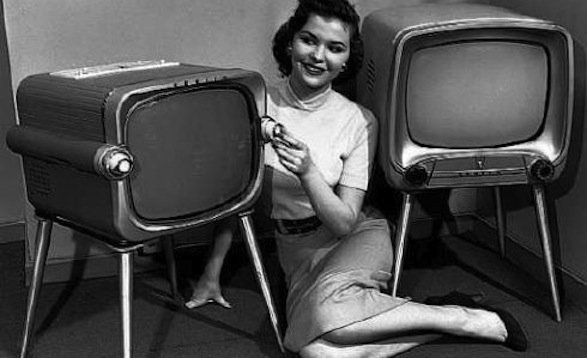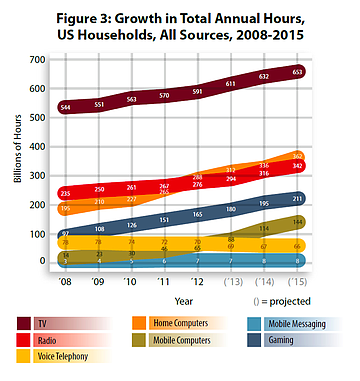 Facebook
Facebook
 X
X
 Instagram
Instagram
 TikTok
TikTok
 Youtube
Youtube

Americans will be consuming an average of more than 15 hours' worth of media outside the workplace every day by 2015, according to a new study from UCSD's San Diego Supercomputer Center.
"One can actually have more than 24 hours in a media day," clarifies James E. Short, author of the "How Much Media? 2013 Report on American Consumers" study for the University of Southern California's Marshall School of Business and a lead scientist at the Supercomputer Center.

Short's work identifies a number of sources of "media" — television, computer use including social networking, gaming, radio, mobile phone use, among others — and notes that individuals are frequently consuming media from more than one source at a time in the home or workplace, though not all of the media delivered is actually gaining the attention, or even comprehension, of its consumers.
"While machines can always overload us, it’s more a question of, how can we design these systems to produce meaningful value? That’s the critical challenge," Short tells UCSD's NewsCenter.
The study looks back at explosive data consumption growth between 2008 and 2012 to arrive at the 2015 projections. During that time, the average media consumption of Americans grew from 33 gigabytes' worth per day to 63 gigabytes. For illustrative purposes, annual U.S. data consumption, if it were printed in books that were stacked across the surface of the country (Alaska and Hawaii included), it would create a pile 14 feet high.


Americans will be consuming an average of more than 15 hours' worth of media outside the workplace every day by 2015, according to a new study from UCSD's San Diego Supercomputer Center.
"One can actually have more than 24 hours in a media day," clarifies James E. Short, author of the "How Much Media? 2013 Report on American Consumers" study for the University of Southern California's Marshall School of Business and a lead scientist at the Supercomputer Center.

Short's work identifies a number of sources of "media" — television, computer use including social networking, gaming, radio, mobile phone use, among others — and notes that individuals are frequently consuming media from more than one source at a time in the home or workplace, though not all of the media delivered is actually gaining the attention, or even comprehension, of its consumers.
"While machines can always overload us, it’s more a question of, how can we design these systems to produce meaningful value? That’s the critical challenge," Short tells UCSD's NewsCenter.
The study looks back at explosive data consumption growth between 2008 and 2012 to arrive at the 2015 projections. During that time, the average media consumption of Americans grew from 33 gigabytes' worth per day to 63 gigabytes. For illustrative purposes, annual U.S. data consumption, if it were printed in books that were stacked across the surface of the country (Alaska and Hawaii included), it would create a pile 14 feet high.
Comments